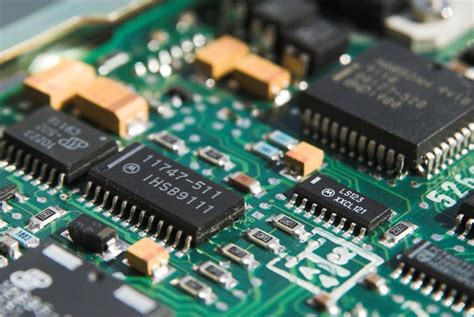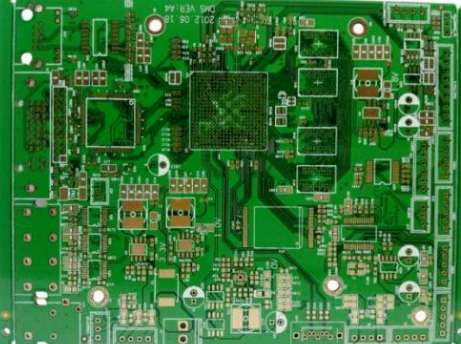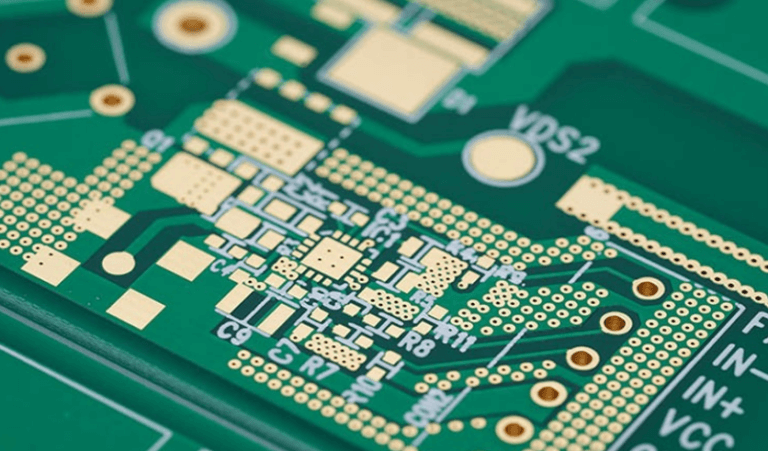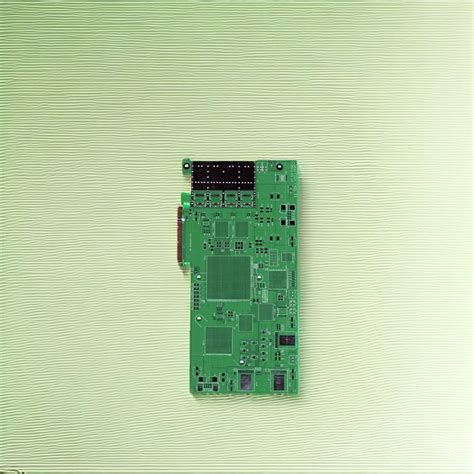Ceramic pcb specification
Understanding The Key Specifications Of Ceramic PCBs
Ceramic printed circuit boards (PCBs) have emerged as a pivotal component in the electronics industry, particularly in applications demanding high thermal conductivity and superior mechanical strength. Understanding the key specifications of ceramic PCBs is essential for engineers and designers who aim to leverage their unique properties in various applications. These specifications not only determine the performance and reliability of the PCBs but also influence the overall efficiency of the electronic devices in which they are employed.
To begin with, one of the most critical specifications of ceramic PCBs is their thermal conductivity.
Unlike traditional FR-4 boards, ceramic PCBs are renowned for their ability to dissipate heat efficiently. This characteristic is primarily due to the inherent properties of ceramic materials such as aluminum oxide (Al2O3), aluminum nitride (AlN), and beryllium oxide (BeO).
These materials exhibit thermal conductivities ranging from 20 W/mK to over 200 W/mK, significantly surpassing the capabilities of conventional PCB materials. Consequently, ceramic PCBs are ideal for high-power applications where heat management is crucial, such as in LED lighting, power electronics, and RF modules.
In addition to thermal conductivity, the mechanical strength of ceramic PCBs is another vital specification.
Ceramic materials are known for their robustness and resistance to mechanical stress, making them suitable for environments where durability is paramount. This strength is particularly beneficial in applications subjected to harsh conditions, such as aerospace and automotive industries, where reliability and longevity are non-negotiable. Furthermore, the dimensional stability of ceramic PCBs ensures minimal expansion or contraction with temperature fluctuations, thereby maintaining the integrity of the circuit over time.
Another important specification to consider is the dielectric strength of ceramic PCBs.
The dielectric properties of ceramic materials provide excellent electrical insulation, which is crucial for preventing electrical breakdown and ensuring the safe operation of electronic devices. This high dielectric strength, combined with low dielectric loss, makes ceramic PCBs suitable for high-frequency applications, including microwave and RF circuits. The ability to maintain signal integrity at high frequencies is a significant advantage, particularly in telecommunications and advanced computing systems.
Moreover, the coefficient of thermal expansion (CTE) is a specification that cannot be overlooked.
Ceramic PCBs typically exhibit a low CTE, which closely matches that of semiconductor materials like silicon. This compatibility reduces the risk of thermal mismatch during temperature cycling, thereby enhancing the reliability of the solder joints and the overall assembly. The low CTE of ceramic PCBs is particularly beneficial in applications involving direct chip attachment, where thermal stress can lead to failure.
In conclusion, the key specifications of ceramic PCBs, including thermal conductivity, mechanical strength, dielectric strength, and coefficient of thermal expansion, play a crucial role in determining their suitability for various applications.
These specifications not only enhance the performance and reliability of electronic devices but also contribute to their efficiency and longevity. As the demand for high-performance electronic components continues to grow, understanding these specifications becomes increasingly important for engineers and designers seeking to optimize their designs and meet the ever-evolving needs of the industry. By leveraging the unique properties of ceramic PCBs, it is possible to achieve superior thermal management, mechanical robustness, and electrical performance, thereby paving the way for innovative solutions in a wide range of applications.

Advantages Of Ceramic PCBs Over Traditional PCB Materials
Ceramic printed circuit boards (PCBs) have emerged as a significant advancement in the field of electronics, offering a range of advantages over traditional PCB materials such as FR-4, polyimide, and metal-core substrates. As the demand for high-performance electronic devices continues to grow, the need for materials that can withstand extreme conditions while maintaining superior performance has become increasingly important. Ceramic PCBs, with their unique properties, provide a compelling solution to these challenges.
One of the primary advantages of ceramic PCBs is their exceptional thermal conductivity.
Unlike traditional PCB materials, which often require additional thermal management solutions, ceramic substrates inherently possess high thermal conductivity. This characteristic allows for efficient heat dissipation, which is crucial in applications where electronic components generate significant amounts of heat. As a result, ceramic PCBs are particularly well-suited for high-power applications, such as LED lighting, power electronics, and RF communication devices, where managing heat is critical to maintaining performance and reliability.
In addition to their thermal properties, ceramic PCBs offer superior mechanical strength and stability.
The inherent rigidity of ceramic materials ensures that these PCBs can withstand mechanical stress and vibration better than their traditional counterparts. This makes them ideal for use in environments where mechanical reliability is paramount, such as in automotive, aerospace, and industrial applications. Furthermore, the dimensional stability of ceramic substrates ensures that they maintain their structural integrity over a wide range of temperatures, reducing the risk of warping or deformation that can occur with other materials.
Another significant advantage of ceramic PCBs is their excellent electrical insulation properties.
Ceramic materials provide high dielectric strength, which is essential for preventing electrical breakdown and ensuring the safe operation of electronic circuits. This property is particularly beneficial in high-voltage applications, where maintaining electrical isolation between components is critical. Moreover, the low dielectric constant of ceramic materials contributes to reduced signal loss and improved signal integrity, making them an attractive choice for high-frequency applications.
The chemical stability of ceramic PCBs is yet another factor that sets them apart from traditional PCB materials.
Ceramics are inherently resistant to moisture, chemicals, and other environmental factors that can degrade the performance of electronic circuits over time. This resistance ensures that ceramic PCBs maintain their performance and reliability even in harsh operating conditions, such as those found in outdoor or industrial environments. Consequently, devices utilizing ceramic PCBs often exhibit longer lifespans and reduced maintenance requirements.
While the benefits of ceramic PCBs are numerous, it is important to acknowledge that they also come with certain challenges.
The manufacturing process for ceramic PCBs can be more complex and costly compared to traditional materials, which may limit their use in cost-sensitive applications. However, as technology advances and production techniques improve, the cost of ceramic PCBs is expected to decrease, making them more accessible for a wider range of applications.
In conclusion, the advantages of ceramic PCBs over traditional PCB materials are clear. Their superior thermal conductivity, mechanical strength, electrical insulation, and chemical stability make them an ideal choice for high-performance and high-reliability applications. As the electronics industry continues to evolve, the demand for materials that can meet the rigorous requirements of modern devices will only increase, positioning ceramic PCBs as a key player in the future of electronic design and manufacturing.

Thermal Management In Ceramic PCB Design
In the realm of electronic design, thermal management is a critical consideration, particularly when it comes to ceramic printed circuit boards (PCBs). Ceramic PCBs are renowned for their superior thermal conductivity, making them an ideal choice for applications that demand efficient heat dissipation. Understanding the specifications related to thermal management in ceramic PCB design is essential for engineers and designers aiming to optimize performance and reliability.
To begin with, ceramic PCBs are typically composed of materials such as aluminum oxide (Al2O3), aluminum nitride (AlN), or beryllium oxide (BeO).
These materials are selected for their excellent thermal properties, which significantly surpass those of traditional FR-4 substrates. For instance, aluminum nitride boasts a thermal conductivity of approximately 170-230 W/mK, which is substantially higher than the 0.3-0.4 W/mK offered by standard FR-4. This inherent characteristic of ceramic materials facilitates the rapid dissipation of heat away from critical components, thereby enhancing the overall thermal management of the system.
Moreover, the design of ceramic PCBs often incorporates additional features to further improve thermal performance.
One such feature is the use of metal cores or layers, which can be integrated into the ceramic substrate to provide a direct thermal path. This integration is particularly beneficial in high-power applications where heat generation is significant. By efficiently channeling heat away from sensitive components, these metal layers help maintain optimal operating temperatures, thereby extending the lifespan of the electronic device.
In addition to material selection and structural enhancements, the layout of the PCB plays a pivotal role in thermal management.
Designers must carefully consider the placement of components to minimize thermal resistance and ensure uniform heat distribution. For example, high-power components should be strategically positioned to avoid thermal hotspots, which can lead to localized overheating and potential failure. Furthermore, the use of thermal vias—small, plated holes that connect different layers of the PCB—can enhance heat transfer between layers, thus improving the overall thermal performance of the board.
Transitioning to the manufacturing process, it is important to note that the production of ceramic PCBs involves specialized techniques that differ from those used for traditional PCBs.
The sintering process, for instance, is a critical step in ceramic PCB fabrication, where the ceramic material is heated to a high temperature to achieve the desired mechanical and thermal properties. This process must be meticulously controlled to ensure the integrity and performance of the final product.
Furthermore, the choice of surface finish can also impact the thermal management capabilities of a ceramic PCB. Surface finishes such as electroless nickel immersion gold (ENIG) or silver can provide excellent thermal conductivity while also offering protection against oxidation and corrosion. Selecting the appropriate surface finish is crucial for maintaining the thermal efficiency and reliability of the PCB over its operational lifespan.
In conclusion, the specification of ceramic PCBs for thermal management involves a comprehensive understanding of material properties, design strategies, and manufacturing processes. By leveraging the inherent advantages of ceramic materials and incorporating thoughtful design elements, engineers can effectively manage heat dissipation in high-performance electronic applications. As technology continues to advance, the demand for efficient thermal management solutions will only grow, underscoring the importance of ceramic PCBs in the ever-evolving landscape of electronic design.

Applications And Industry Standards For Ceramic PCBs
Ceramic printed circuit boards (PCBs) have emerged as a pivotal component in various high-performance applications, owing to their superior thermal and electrical properties. These PCBs are primarily constructed using ceramic materials such as alumina, aluminum nitride, and beryllium oxide, which offer excellent heat dissipation, high thermal conductivity, and robust mechanical strength. As industries continue to demand more efficient and reliable electronic components, ceramic PCBs have found their niche in several critical applications, each governed by stringent industry standards.
One of the primary applications of ceramic PCBs is in the aerospace and defense sectors. These industries require components that can withstand extreme environmental conditions, including high temperatures and mechanical stress.
Ceramic PCBs are ideal for such applications due to their ability to maintain performance integrity under these demanding conditions. Furthermore, the high thermal conductivity of ceramic materials ensures efficient heat management, which is crucial for the reliability and longevity of aerospace and defense systems. Industry standards such as MIL-PRF-31032 and IPC-6012D are often referenced to ensure that ceramic PCBs meet the rigorous quality and performance criteria required in these sectors.
In addition to aerospace and defense, the automotive industry has increasingly adopted ceramic PCBs, particularly in electric vehicles (EVs) and advanced driver-assistance systems (ADAS).
The high power density and thermal management capabilities of ceramic PCBs make them suitable for power electronics and battery management systems in EVs. As the automotive industry continues to innovate, the demand for components that can operate efficiently at high temperatures and in compact spaces has grown. Ceramic PCBs meet these requirements, and their use is often guided by standards such as ISO 16750, which outlines the environmental conditions and testing procedures for electrical and electronic equipment in road vehicles.
The medical industry also benefits significantly from the use of ceramic PCBs, especially in diagnostic and imaging equipment.
Devices such as MRI machines and CT scanners require components that can deliver precise performance without interference from external factors. The inherent properties of ceramic materials, including their low dielectric constant and high insulation resistance, make ceramic PCBs an excellent choice for such applications. Standards like ISO 13485, which specifies requirements for a quality management system in the medical device industry, ensure that ceramic PCBs used in medical applications adhere to the highest quality and safety standards.
Moreover, the telecommunications industry relies on ceramic PCBs for high-frequency applications, including satellite communications and radar systems.
The low signal loss and high-frequency performance of ceramic materials make them suitable for these applications, where signal integrity is paramount. Standards such as IPC-6018, which covers high-frequency (microwave) printed boards, provide guidelines to ensure that ceramic PCBs meet the necessary performance criteria.
In conclusion, ceramic PCBs have become indispensable in various high-performance applications across multiple industries. Their unique properties, including high thermal conductivity, mechanical strength, and electrical insulation, make them suitable for environments where traditional PCBs may fail. As technology continues to advance, the role of ceramic PCBs is expected to expand further, driven by the need for components that can meet the ever-increasing demands of modern electronic systems. Adherence to industry standards ensures that these PCBs deliver reliable performance, thereby supporting the critical functions of the systems in which they are employed.




